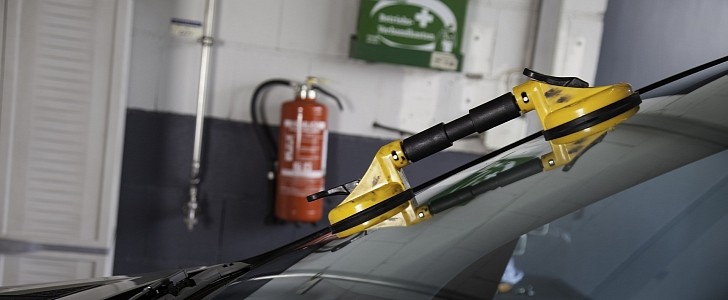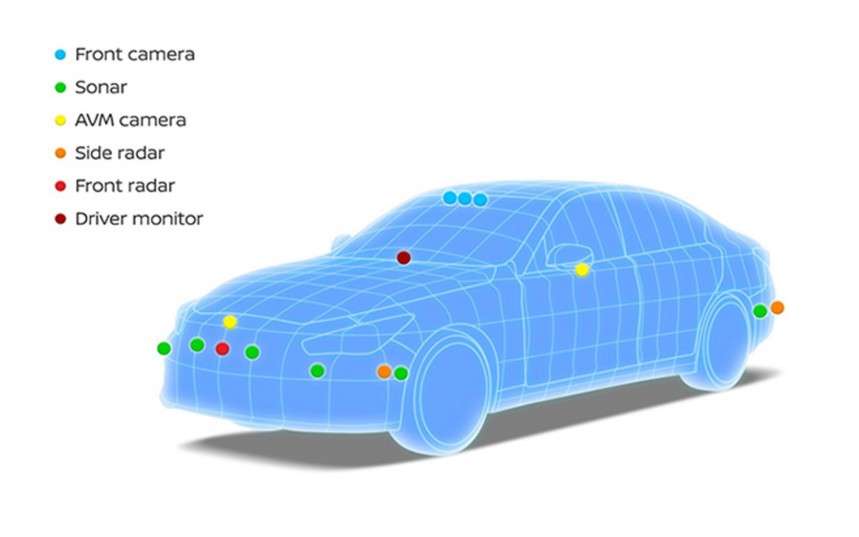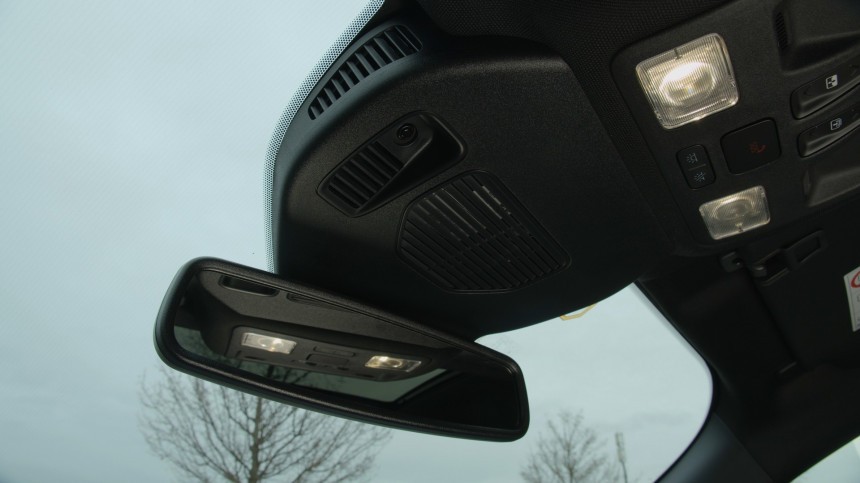Technology has made cars safer, but also complicated and more expensive to repair. Take the windshield for instance: this is no longer a piece of glass to keep the rain and wind out. Today it has sophisticated sensors attached to it and even a heating system to aid with fogging in the winter. That’s why a broken windshield on a modern car can be a real pain.
There were times when the windshield lived up to its name, being nothing more than a piece of glass with the sole purpose of protecting against the wind. The time passed and the automobile became more dangerous, so the windshield had to multitask and gain more functions. At first, the glass it was made of changed to make it brittle, to not cut people’s heads off in case of an accident.
Later on, it became hard again but this time bonded to a sheet of polycarbonate for the same reason. In its laminated form, it became a structural part of the car and allowed it to also block flying objects that would’ve otherwise hit the driver head on. Neither of these windshields was particularly high tech but that was about to change as the first automation features made their way to cars.
The simplest of them all was the rain sensor that moved the wipers when the raindrops started to cover the windshield. It was a small radar sensor, no different from those used in the bumpers to alert you are just about to hit something hard. The problem is you have to recalibrate these sensors every time you change the windshield, so it’s already starting to complicate repairs.
Next were the automatic headlights sensors, and then more, longer-range radar sensors and cameras. They all serve their purpose to make our cars safer on the road, eventually becoming the eyes of the car and its various assistance and safety systems.
Before everybody knew it, the windshield became packed with technology that was not only sensitive but also expensive. The problem is the windshield is still a fragile piece of glass that breaks easily when hit by rocks and other hard objects. And when it does, it sure means you’re in for a hefty repair bill.
It isn’t just the windshield that became extremely expensive to repair, it’s everything that carries advanced sensors within. This could be the bumper, for instance, another part of your car that is notoriously prone to be hit. Since the sensors are extremely sensitive, high-tech devices, specially trained technicians are required to work on them. Besides that, car manufacturers advise against using aftermarket parts for repairs or even reusing car parts that need more than a paint job.
All these make modern car repairs extremely expensive. It’s no problem when you have sufficient insurance to cover the repairs, but otherwise, you’re pretty much screwed. The funny thing is insurance companies don’t like it either when it’s time to pay the repairs. Even funnier it is when you think the insurance companies themselves pushed for the use of assistance systems, as a way to reduce the number and severity of car accidents.
The truth is the assistance systems are indeed successful at achieving a sizeable reduction in the number of accidents. A recent Reuters analysis shows how adopting different assistance techs helped reduce accidents rates. The biggest influence was observed in the case of forward collision warning systems with automatic emergency braking, which help to reduce the number of front-to-rear crashes by almost 30%. Almost as efficient are the blind spot warning systems and the lane departure warning systems.
These systems and their corresponding sensors won’t be going away, especially with the progress made in autonomous driving systems. More and more sensors will mean safer cars, but also more expensive repairs. Another take is that the times of shade-tree mechanics and home repairs are officially over.
Later on, it became hard again but this time bonded to a sheet of polycarbonate for the same reason. In its laminated form, it became a structural part of the car and allowed it to also block flying objects that would’ve otherwise hit the driver head on. Neither of these windshields was particularly high tech but that was about to change as the first automation features made their way to cars.
The simplest of them all was the rain sensor that moved the wipers when the raindrops started to cover the windshield. It was a small radar sensor, no different from those used in the bumpers to alert you are just about to hit something hard. The problem is you have to recalibrate these sensors every time you change the windshield, so it’s already starting to complicate repairs.
Before everybody knew it, the windshield became packed with technology that was not only sensitive but also expensive. The problem is the windshield is still a fragile piece of glass that breaks easily when hit by rocks and other hard objects. And when it does, it sure means you’re in for a hefty repair bill.
It isn’t just the windshield that became extremely expensive to repair, it’s everything that carries advanced sensors within. This could be the bumper, for instance, another part of your car that is notoriously prone to be hit. Since the sensors are extremely sensitive, high-tech devices, specially trained technicians are required to work on them. Besides that, car manufacturers advise against using aftermarket parts for repairs or even reusing car parts that need more than a paint job.
All these make modern car repairs extremely expensive. It’s no problem when you have sufficient insurance to cover the repairs, but otherwise, you’re pretty much screwed. The funny thing is insurance companies don’t like it either when it’s time to pay the repairs. Even funnier it is when you think the insurance companies themselves pushed for the use of assistance systems, as a way to reduce the number and severity of car accidents.
These systems and their corresponding sensors won’t be going away, especially with the progress made in autonomous driving systems. More and more sensors will mean safer cars, but also more expensive repairs. Another take is that the times of shade-tree mechanics and home repairs are officially over.








